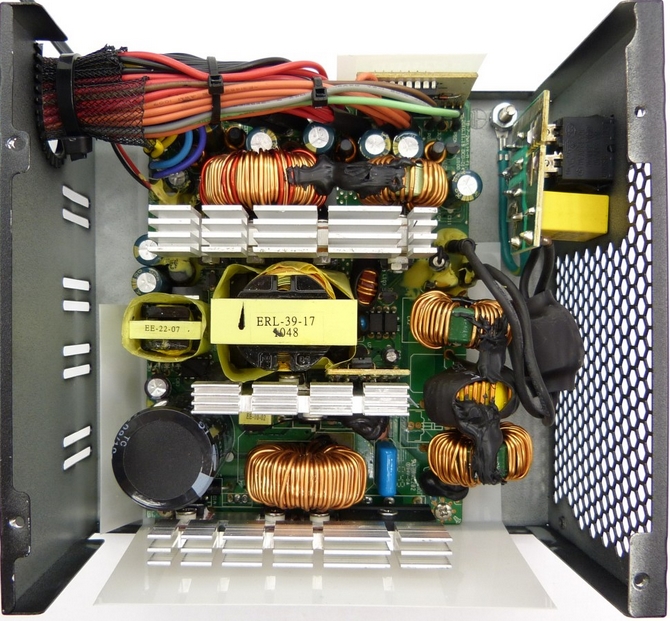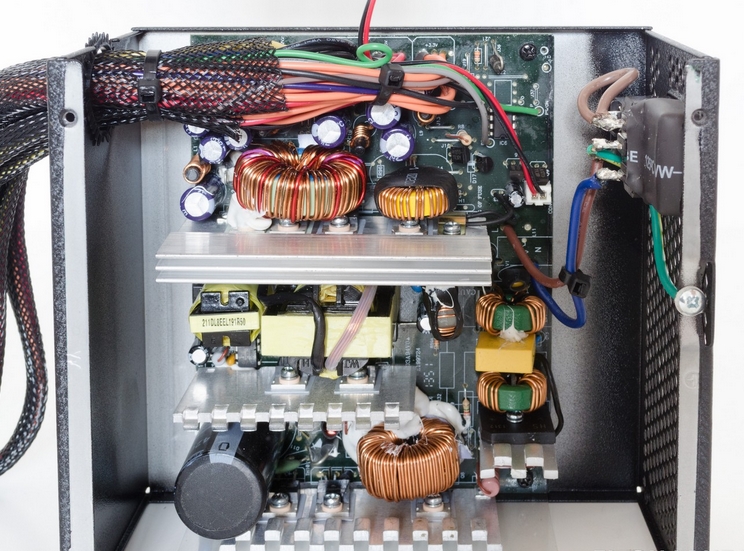What is "multiple +12V rails", really?
In most cases, multiple +12V rails are actually just a single +12V source just split up into multiple +12V outputs each with a limited output capability.
There are a few units that actually have two +12V sources, but these are typically very high output power supplies. And in most cases these multiple +12V outputs are split up again to form a total of four, five or six +12V rails for even better safety. To be clear: These REAL multiple +12V rail units are very rare and are all 1000W+ units (Enermax Galaxy, Topower/Tagan "Dual Engine", Thermaltake Tough Power 1000W & 1200W, for example.)
In some cases, the two +12V rail outputs are actually combined to create one large +12V output (Ultra X3 1000W, PC Power & Cooling Turbo Cool 1000W, for example.)
So why do they do they split up +12V rails??
Short circuit protection only works if there's minimal to no resistance in the short (like two wires touching or a hot lead touching a ground like the chassis wall, etc.) If the short occurs on a PCB, in a motor, etc. the resistance in this circuit will typically NOT trip short circuit protection. What does happen is the short essentially creates a load. Without an OCP the load just increases and increases until the wire heats up and the insulation melts off and there's a molten pile of flaming plastic at the bottom of the chassis. This is why rails are split up and "capped off" in most power supplies; there is a safety concern.
Is it true that some PSU's that claim to be multiple +12V rails don't have the +12V rail split at all?
Yes, this is true. But it's the exception and not the norm. It's typically seen in Seasonic built units (like the Corsair HX and Antec True Power Trio.) It's actually cheaper to make a single +12V rail PSU because you forego all of the components used in splitting up and limiting each rail and this may be one reason some OEM's will not split the rails, but say they are split. Some system builders adhere very closely to ATX12V specification for liability reasons, so a company that wants to get that business but also save money and reduce R&D costs will often "fib" and say the PSU has it's +12V split when it does not.
Why don't those PSU companies get in trouble? Because Intel actually lifted the split +12V rail requirement from spec, but they didn't actually "announce" it. They just changed the verbiage from "required" to "recommended" leaving system builders a bit confused as to what the specification really is.
So does splitting the +12V rails provide "cleaner and more stable voltages" like I've been told in the past?
It is true that marketing folks have told us that multiple +12V rails provides "cleaner and more stable voltages", but this is usually a falsehood. Quite frankly, the use this explaination because "offers stability and cleaner power" sounds much more palletable than "won't necessarily catch fire". Like I said before, typically there is only one +12V source and there is typically no additional filtering stage added when the rails are split off that makes the rails any more stable or cleaner than if they weren't split at all.
es ya darte ínfulas de algo y ser un perdedor.
no sé de qué cueva habrás salido pero sería mejor que te volvieras a meter dentro de ella







 Citar
Citar
 acabaron en la basura
acabaron en la basura 





